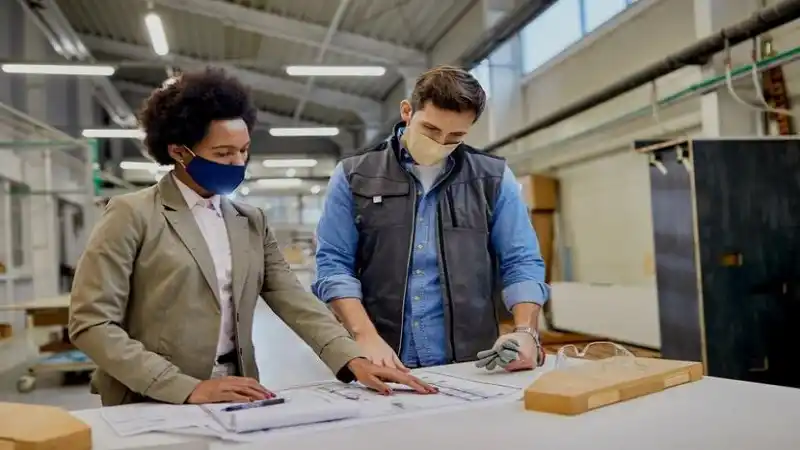
The building materials manufacturing industry has undergone significant transformations in recent years, driven by technological advancements, sustainability concerns, and changing consumer preferences. As construction practices evolve, manufacturers are constantly innovating to meet the demands of modern architecture and engineering. This article explores the latest trends and innovations in building materials manufacturing, highlighting how these developments are shaping the future of construction.
Traditional Building Materials: A Brief Overview
Before delving into cutting-edge innovations, it’s essential to understand the foundation of building materials manufacturing. Traditional materials such as wood, concrete, steel, and glass have been the backbone of construction for centuries. These materials have proven their durability and versatility, forming the basis for countless structures worldwide.
However, as the construction industry faces new challenges, including environmental concerns and the need for energy efficiency, manufacturers are reimagining these traditional materials and developing new alternatives.
Advancements in Building Materials Manufacturing
The building materials manufacturing sector has witnessed remarkable progress in recent years. Manufacturers are now producing materials that are stronger, lighter, and more versatile than ever before. Some notable advancements include:
- High-strength concrete: Engineered to withstand greater loads and resist environmental factors
- Engineered wood products: Offering improved strength and stability compared to traditional lumber
- Advanced steel alloys: Providing enhanced durability and corrosion resistance
- Energy-efficient glazing systems: Improving thermal performance and natural lighting in buildings
These advancements have not only improved the performance of buildings but also expanded the possibilities for architectural design.
Sustainable and Eco-Friendly Materials
Sustainability has become a key focus in building materials manufacturing. As awareness of environmental issues grows, manufacturers are developing eco-friendly alternatives to traditional materials. Some innovative sustainable materials include:
- Recycled steel and aluminum: Reducing the need for raw material extraction
- Bio-based plastics: Derived from renewable resources instead of petroleum
- Bamboo products: Fast-growing and highly renewable
- Mycelium-based materials: Using fungal growth as a binding agent for organic waste
These materials not only reduce the environmental impact of construction but also offer unique aesthetic and performance qualities.
Smart and High-Performance Materials
The integration of technology into building materials has given rise to a new category of smart and high-performance products. These materials can adapt to their environment, enhance energy efficiency, and even contribute to occupant well-being. Examples include:
- Self-healing concrete: Capable of repairing small cracks without human intervention
- Phase-change materials: Regulating indoor temperatures by absorbing and releasing heat
- Photocatalytic surfaces: Breaking down air pollutants when exposed to light
- Electrochromic glass: Adjusting transparency in response to electrical currents
These innovative materials are revolutionizing the way buildings interact with their environment and occupants.
The Role of Technology in Manufacturing Processes
Advancements in manufacturing technology have significantly impacted the building materials industry. Digital tools and automated processes have improved efficiency, precision, and customization capabilities. Some key technological innovations include:
- 3D printing: Enabling the production of complex components and reducing waste
- Robotics and automation: Streamlining production processes and improving quality control
- Building Information Modeling (BIM): Enhancing collaboration and optimizing material usage
- Artificial Intelligence (AI): Predicting material performance and optimizing manufacturing processes
These technologies are improving the quality of building materials and reducing production costs and lead times.
Challenges and Opportunities in the Industry
While the building materials manufacturing sector is experiencing rapid innovation, it also faces several challenges:
- Regulatory compliance: Meeting increasingly stringent environmental and safety standards
- Cost pressures: Balancing innovation with affordability
- Supply chain disruptions: Adapting to global uncertainties and resource scarcity
- Skilled labor shortage: Finding and retaining qualified workers in a competitive market
However, these challenges also allow manufacturers to differentiate themselves through innovation, sustainability, and superior product performance.
Future Outlook for Building Materials Manufacturing
The future of building materials manufacturing looks promising, with several trends expected to shape the industry:
- Increased focus on circular economy principles
- Greater integration of digital technologies in manufacturing processes
- Development of materials that contribute to carbon sequestration
- Expansion of bio-based and naturally derived materials
- Growing demand for modular and prefabricated building components
As these trends evolve, manufacturers will need to stay agile and innovative to meet the changing needs of the construction industry.
Conclusion
The building materials manufacturing industry is at the forefront of innovation in the construction sector. From sustainable alternatives to smart, high-performance products, manufacturers continuously push the boundaries of what’s possible. As technology advances and environmental concerns grow, the industry will play a crucial role in shaping the future of our built environment. By embracing these innovations and addressing ongoing challenges, building materials manufacturers can contribute to creating more sustainable, efficient, and resilient structures for generations to come.








